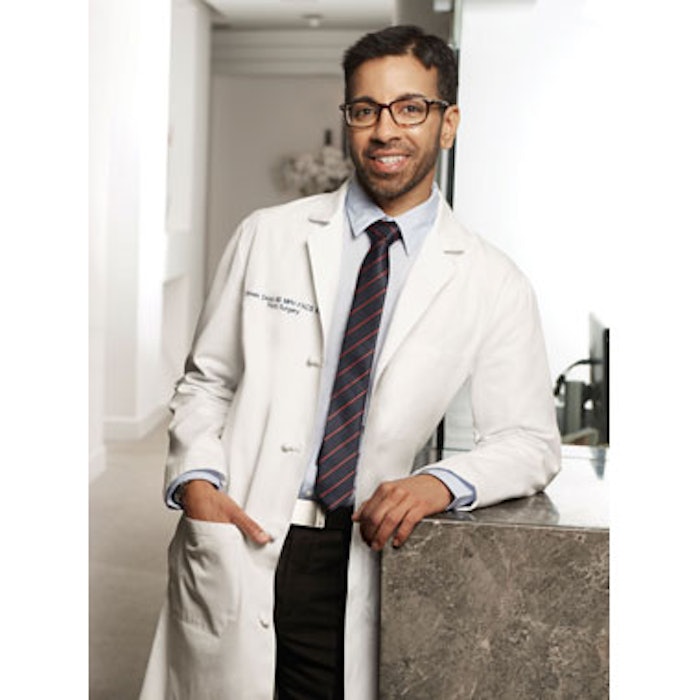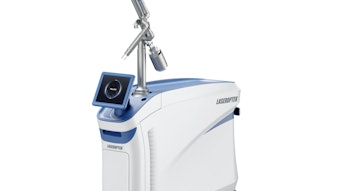
Urmen Desai, MD, learned at an early age the rewards of caring for others. His parents ran several nursing homes in the Boston area. “When I was young, I would go to work with my mother and father. I would chat and play games with the patients,” he says. “As I got a older, my after-school job was working as an activities counselor in one of the nursing homes—playing bingo and organizing card games.”
Thanks to those early experiences, Dr. Desai realized he felt most comfortable in a healthcare setting, interacting with patients. He began working toward a career in medicine. “We have many doctors in our family, so it was almost ingrained in me that I was going to become a physician, and I was happy with that,” he says. “I gravitated toward classes like biology, chemistry, physics and anatomy.”
While still in high school, he took courses at MIT and then enrolled as an undergraduate at the University of Rochester in New York. “By the time I got to college, I was pre-med and majoring in neuroscience because I was interested in the brain and how it functions,” says Dr. Desai.
After spending some time working with the Tufts University Department of Neurosurgery during medical school, he realized that the specialty didn’t offer the instant gratification of changing a life that he had pictured when he chose medicine.
Changing Lives
He gained a clearer picture of his desired career path during a medical mission trip to rural China when he was a fourth-year medical student. There, he helped perform nearly 250 cleft lip and cleft palate surgeries at a surgical camp.
“We met families that had been on buses for days and walked for hours just to see us,” he says. “The sad part about it is there were so many kids lined up to be evaluated and screened to have surgery that we had to turn some people away. There was so much need because so many villages had no access to a plastic surgeon—or any kind of surgeon.”
Seeing how he could change a child’s life with one procedure convinced him plastic surgery was the right path for him. “After the cleft lip repair, other families would begin to interact again with the parents of this child,” says Dr. Desai. “The child could now go to school and have relationships. People no longer shunned and ostracized the family the way they had prior to the surgery. I felt that with one quick 45-minute procedure, I could change the life of not only this child but an entire family.”
The trip to China was not Dr. Desai’s first experience in international service. As a high school student, he helped build a schoolhouse in rural Ecuador. After college, he travelled to India to volunteer at a leprosy camp run by Mother Teresa’s Missionary in Calcutta. After medical school, he traveled to Koh Phi Phi, Thailand, to volunteer after the 2005 tsunami disaster. He has also traveled to Port-au-Prince, Haiti, more than a dozen times to perform pediatric cleft-lip and palate reconstruction as well as burn and hand reconstruction in children.
Embracing Plastic Surgery
Before entering his plastic surgery training, Dr. Desai simultaneously worked toward—and obtained—a graduate degree in Health Policy from Harvard University and a medical degree from Tufts University School of Medicine. He completed his surgical residency training at Brown Medical School, Children’s Hospital Boston-Harvard Medical School and Tufts Medical Center. He went on to complete a second residency in plastic surgery at the University of Miami and was selected for a coveted fellowship in Advanced Aesthetic Plastic Surgery with Richard Ellenbogen, MD, at Beverly Hills Body in Beverly Hills, California.
Having seen his parents’ success as both healthcare providers and business owners, Dr. Desai next set his sights on private practice ownership. “I wanted to give my practice more of my personal touch as opposed to working in an academic institution,” he says. “I wanted to work one-on-one with my patients and have my name directly associated with the care of
those patients.”
He first went into practice on Park Avenue in New York City, but soon missed the West Coast. “I had spent most of my life on the East Coast. But after training for a year with Dr. Ellenbogen in Beverly Hills, I had gotten a taste of the weather in Southern California, the people and also, perhaps most importantly, aesthetic surgery,” he says. “Aesthetic medicine is very popular here, so I knew an aesthetic surgery practice had a better chance of success here.”
A Higher Standard
While Southern California offers a larger pool of patients seeking aesthetic procedures, it is also highly competitive. “I knew my practice needed to look modern and sleek to mesh with the Beverly Hills style. But at the same time, I’m young so I wanted it to be a contemporary sleek that would stand out, especially to people who see it online,” he says.
As with most start-ups, things were difficult at first. Dr. Desai spent a lot of his time taking ER calls. With little money for advertising, he turned to social media. “I still do a lot of it today. I Snapchat some of my surgeries and am active on Instagram, Facebook and Twitter,” he says. “You have to be on multiple sites because you never know when Snapchat is not going to be cool anymore or Instagram may start to become boring to consumers. I try to always stay ahead of the curve and look for that next hot thing.”
Over time, he made a name for himself in Beverly Hills. “Nurses and faculty in the hospital got to know me, as well as primary care doctors and other surgeons associated with some of the hospitals here in Beverly Hills,” he says. “Slowly, day-by-day, week-by-week and month-by-month the practice continued to grow.”
While his professional network helped bring in new referrals, he notes that social media also had an impact, particularly in improving conversion rates. “It’s like walking into the living room of your favorite TV show,” says Dr. Desai, who uses social media to introduce patients to the consultation process, specific procedures and the physicial practice. “As soon as they walk in and meet me for the first time, they feel like they already know me. Although I’m just meeting them for the first time, they know my personality, they’ve seen the office and they automatically feel comfortable with me,” he says.
His use of technology during consultations also helps prospective patients feel more comfortable about their potential outcomes. During the patient’s initial consultation, he uses imaging technology to create 3D simulations. Then the patient puts on a set of Virtual Reality goggles to see what they will look like after surgery in a 3D world. “This gives them a more realistic understanding of what aesthetic plastic surgery could help them achieve,” says Dr. Desai.
Regional Differences
Having started his career on the East Coast before moving to Miami during residency and then settling in Beverly Hills, California, Dr. Desai has had a chance to work in what he calls “the three epicenters of plastic surgery in the United States. What’s very interesting is this gave me a taste for different types of plastic surgery,” he says. “Much like fashion is different in New York than it is in Paris and Milan, plastic surgery is very different in Miami versus New York City or Beverly Hills.”
n Miami, he explains, Brazilian buttock lifts are very popular, whereas in New York a lot of patients request rhinoplasties and facial aesthetic procedures. “Because it’s so cold, patients are bundled up much of the year. They don’t care about their bodies as much as their faces,” he says. “Now that I’m here in Beverly Hills and Los Angeles, there’s more of an emphasis on breast augmentation and how women look in their bikinis.”
Despite his passion for aesthetic surgery, treating underserved patients and changing lives through medical missions and pro-bono work remains an important part of his career. “After starting my early academic career on the East Coast, and now watching my aesthetic plastic surgery practice thrive on the West Coast, I know that I will always be dedicated to serving those in need despite the glitz and glamour of practicing in Beverly Hills,” he says.
Keith Loria is a freelance writer based in Oakton, Virginia.
Photography by Cory Sorensen











